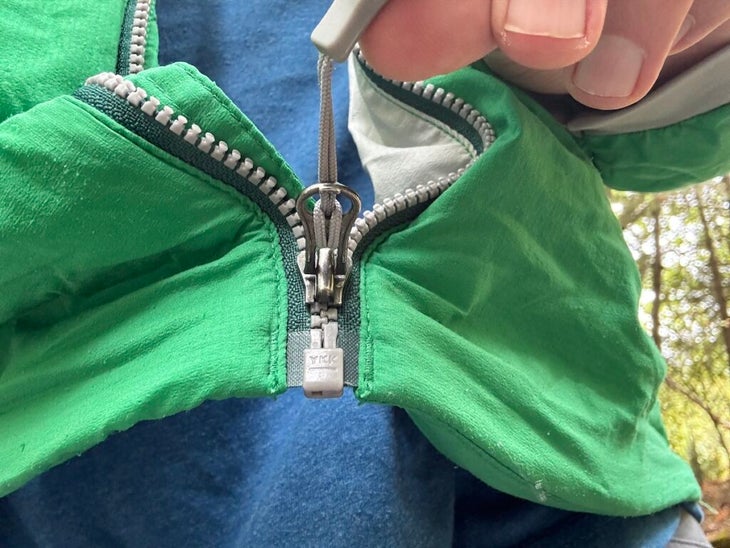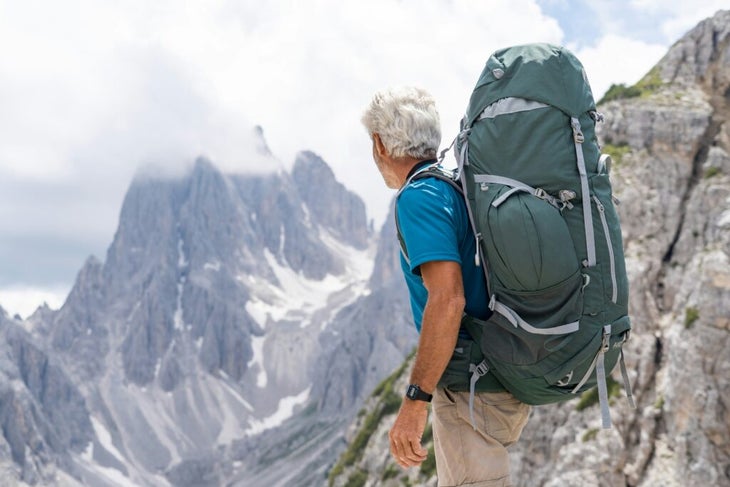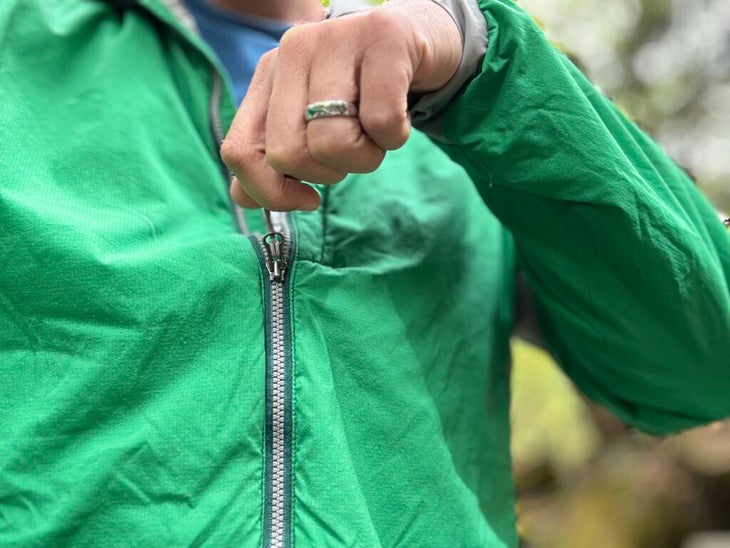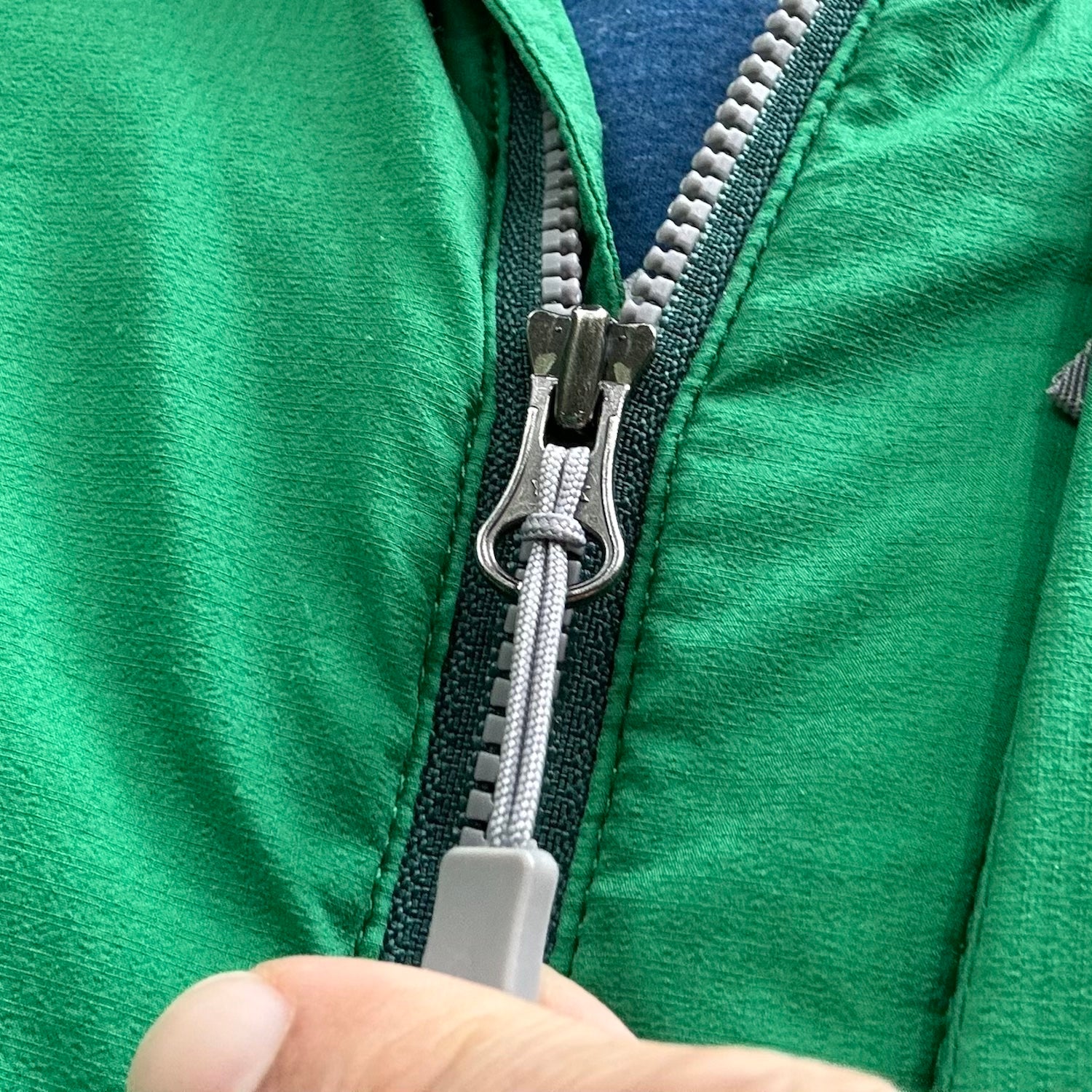You can save hundreds—if not thousands—of dollars on technical outdoor gear if you master just one simple aspect of gear maintenance: zipper care. Even just doing the bare minimum to maintain your zippers can add five or more years of life to backpacks, fancy Gore-Tex jackets, and pricey tents. And the longer you can go without having to replace these things, the more cash you’ll have in your pocket for more important things—like gas money, plane tickets, and breakfast burritos.
Over the years, I’ve interviewed hundreds of gear experts for this column, and zippers have come up dozens of times—particularly when speaking with repair specialists—as the most important individual detail on the pieces of gear they live on. It makes sense: Zippers are a major point of weakness on most gear, and they can break easily if they’re not used correctly. Repairing them is difficult to do at home and expensive to outsource. If an ember flies onto my rain jacket and burns a hole in the shoulder, I can repair it in minutes with some and/or one of my beloved . If I break a zipper, I usually just panic.
But while it’s important to respect zippers, it’s also important not to fear them. After all, they’re simple machines that have barely changed over the past 120 years. To help demystify them, I called three of the most reputable materials and components experts I know, and asked them to share their secrets.
Here’s what you need to know about zipper care, use, and maintenance to keep your gear going year after year.
The Experts
is currently the director of research development and design for BioSkin, which makes medical braces. Before that, he spent 20 years designing gear for the likes of Cascade Designs, REI, and military uniform company Massif, where he specifically focused on trims and zippers.
has been one of my most trusted—and refreshingly candid—materials sources for a decade now. He’s served as global director of product merchandising and design for Mountain Hardwear, and as a senior product manager for brands like The North Face and Simms. He is currently the Global Chief of Outdoor Product at global clothing sourcing company Asmara Group.
has been a lecturer at the Royal College of Art in London—specializing in performance sportswear and design—for nearly 13 years. Ross is an academic through and through and knows an astonishing amount about the history and functionality of zippers.

A Brief Glossary
Tape: The cloth on either side of a zipper
Teeth: The rows of little knobs that come together to create the zipper chain
Pin: The pointy piece of metal or plastic at the bottom of one side of your zipper. This is the piece you have to slot into the little box at the bottom and line up to start the zip.
�ʳܱ���:��The floppy metal or plastic tab you grab with your fingers to slide your zipper up and down
Slider: The chunky piece of metal or plastic the zipper pull is attached to. The slider goes up and down along zipper tape. Its job is to connect or disconnect the teeth as you zip and unzip.
Pin box: The pin box is the little square at the bottom of the zipper that keeps the slider from falling off. You have to insert one side of the zipper tape (the side with the pin) into this box in order to start the zipper.
Zipper Buying Tips
Look for a “YKK” on the zipper
All three of my experts specifically—and sometimes begrudgingly—agreed that YKK makes a fantastic zipper. This is a brand that can be trusted for quality.
“You’re going to mitigate 80 percent of your headaches by going with YKK because they’ve just got it dialed,” Fry said. “It’s high quality. The execution is the same almost everywhere in the world. So whether you get a jacket that’s made in Indonesia, China, or Canada, it’s going to have the same quality of feel and behavior.” Fry said. Put simply: If you buy a jacket with a generic zip rather than YKK brand, your chances of failure are higher.
Test the zipper before you buy
If you can, get the garment in hand and get a feel for the zipper before you pull the trigger on a purchase. The zipper action should be smooth. “It should feel like liquid,” said Fry. And if it feels like it’s catching or halting? “Then it’s probably non-branded and it’s going to break,” he said.
Bigger is better
If you’re looking at two competing products and one has a larger main zipper, it will probably last longer. “Bigger is always better, always, every time,” Fry said. Every time you use a zipper, it wears off little bits of material. Smaller teeth fail faster because they have less material to spare, and the teeth deform or round off—and stop catching—after fewer uses.
The difference in the weight between a #5 zipper (a zipper with teeth that measure a five millimeters in diameter when closed—the kind you might expect to see on a lightweight rain jacket) and a #10 (the kind of zipper you’re probably used to seeing on your carry-on luggage) is remarkably insignificant. But that #10 zipper is going to last a great deal longer.

Best Zipping Practices
The best way to keep your zippers in good working order is to treat them with respect. Here are our experts’ tips.
Don’t use zippers to force something shut
One of the greatest sources of user error, particularly on luggage and backpacks, is trying to use the zipper itself to leverage a piece of gear closed. “They’re not meant to be the closure device,” Fry said. Pulling a stubborn bag shut puts a lot of force on the slider and teeth. Zippers weren’t designed to withstand that force.
“Zips work really well going one-dimensionally, so straight up and down,” Ross explains. Any amount of curvature introduced into the system is going to make the zipper significantly more likely to fail. A light curve, like when I zip a sweatshirt over my tummy after I have joyfully eaten an entire large pizza, is going to make it about five percent more likely to fail. If I were to put a basketball under my sweatshirt and zip it closed, the zipper is much more likely to bust. So, if you spot a bulge in your pack, fix it before trying to zip it shut to help mitigate this problem.
Brute force will only make a stuck zipper worse
“If you’re feeling resistance [in your zip], the number one thing to do is to stop and examine it,” Ross said. Zippers should run smoothly, so any type of resistance at all—even just light sluggishness as you pull up or down—is worth looking at. While this sounds very straightforward, I have to admit it’s hard to follow. In my haste, I have injured many a zipper. Ross has, too. “I’m a bloke,” Ross laughs. “If I get resistance, I pull harder.” But in this case, he recommends you do as he says—not as he does. Yanking a zipper shut is more likely to break teeth or jerk the slider off the track. And just as getting stopped for a speeding ticket makes your commute a whole lot longer, breaking your zipper is going to add more to your packing time. Slow down, and do it right the first time.
Fry also highlighted the importance of using a soft hand when zipping. “Really make sure you take the pressure off of the zipper so that the zipper slides easily,” Fry said. “If you’re struggling with the zipper, it’s probably going to break—either that time or the next time you use it.”
Take extra time to seat your zipper
Munter takes extra care to properly seat the pin of his zipper into the box every time he zips up a jacket. If you rush the seating or don’t get the pin in all the way, it significantly increases the chances that the teeth won’t come together in a uniform manner. That makes them more likely to warp. Little micro-warpings in the teeth often lead to unfixable problems in a zipper over time.
This extra thoughtfulness around engagement in the beginning of the zipping process goes for the slider, too. Munter likes to pinch the slider against the pin box and bring it below the pin before slotting the pin into place. This creates compression that will set the start of the zip up perfectly. “If you start all good, then you’ll function well,” Munter said.

Easy Maintenance Tricks to Make Your Zippers Last
Slowing down and respecting your zips isn’t the only way to keep them going strong. They also need a little TLC every once and a while. Here’s how to keep your zippers running smoothly for years to come.
Clean your zippers
“Gunk gets in the way [of the teeth] and wears your zipper down,” Munter said. Over time, dirt and grit gets clogs the spaces between the teeth, preventing them from sliding together. Dirt can also create abrasion, which chips away at your zipper teeth. The answer? Regular cleaning.
According to Munter, washing your zippers with water alone isn’t enough; to really get dirt and grime out of the tiny crevices, you’ll need an emusifier, like a soap or detergent. While running a jacket through the wash after using it will take care of most of the grime, it is worth getting in there with a brush and soap if you absolutely hammer a jacket with dirt on, say, a climbing trip. If the zipper you want to clean is on a tent or large bag that you wouldn’t want to run through a washing machine, Munter recommends scrubbing your tent or pack with a brush and soapy water.
Size up (or pack less)
We’ve already established that zippers are terrible compression devices. The best way to remedy this is by sizing up. For jackets, think about purchasing a size big enough to comfortably pile on layers underneath it, Ross said. As for packs and suitcases? If you find yourself aggressively zipping it closed, it’s not big enough. Pack less, or buy a bigger bag.
Wax your zippers
Fry learned an invaluable zipper care lesson when he worked at Simms and watched them wax the waterproof zips on waders.
“Seems silly, but anytime you’ve got a big chunky zipper, a little bit of wax can go a long way,” Fry said. “You don’t need to have liquid lubricant stain your fabric, but a hard block of a candle wax [does the trick]. As you move the zipper slider up and down, it heats up and melts the wax into the base the teeth.”
You don’t need much: A single swipe along your zipper has the dual benefit of seriously lubricating the zipping process as well as keeping out sand and grit. Both will improve your zipper’s longevity for years to come.


